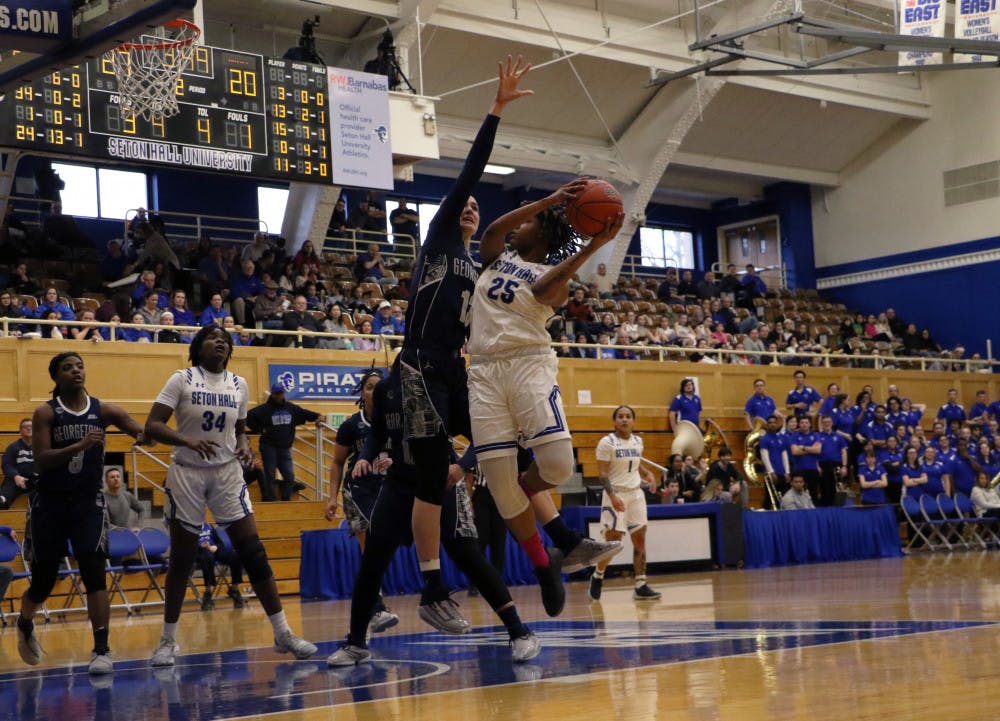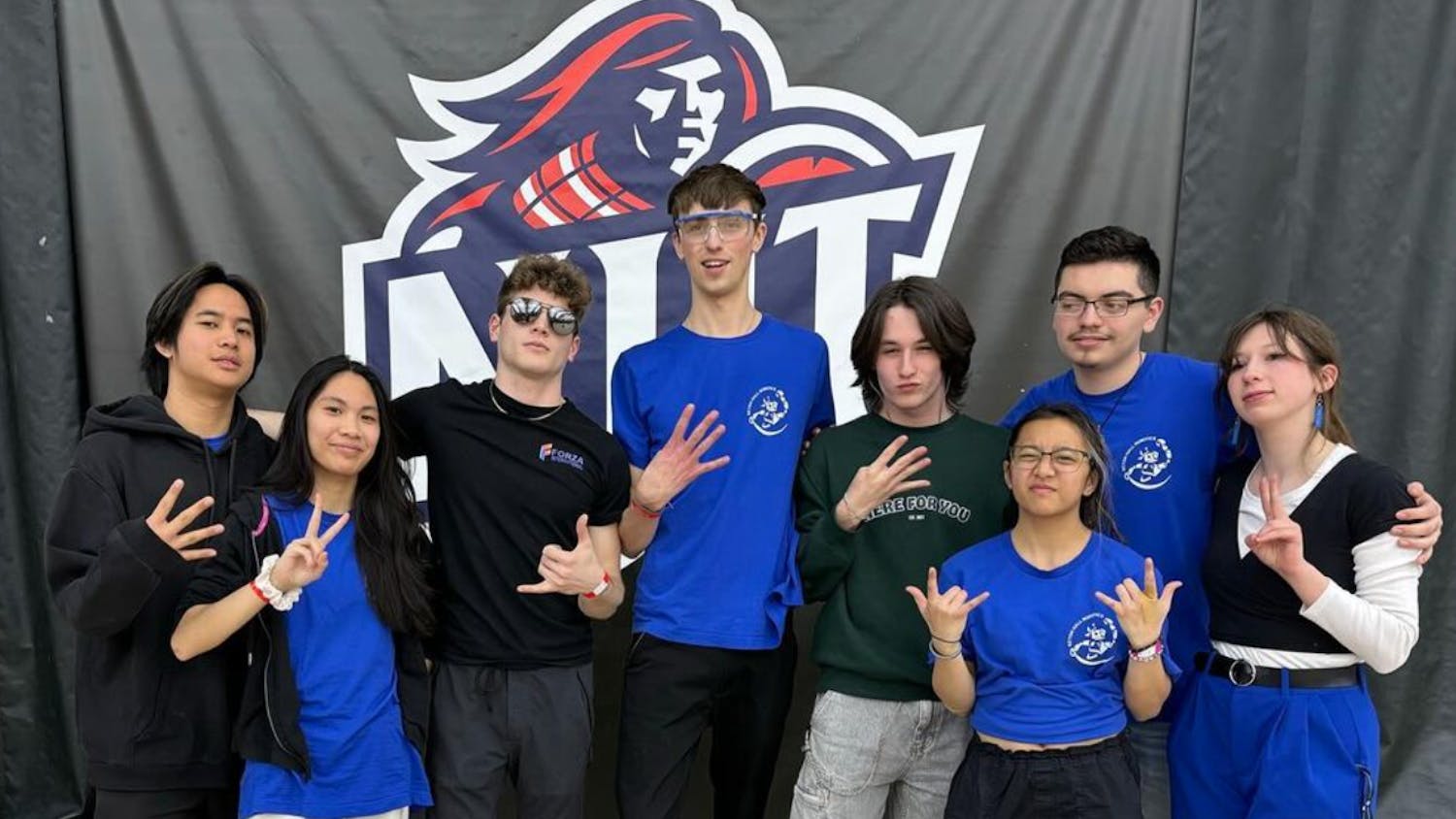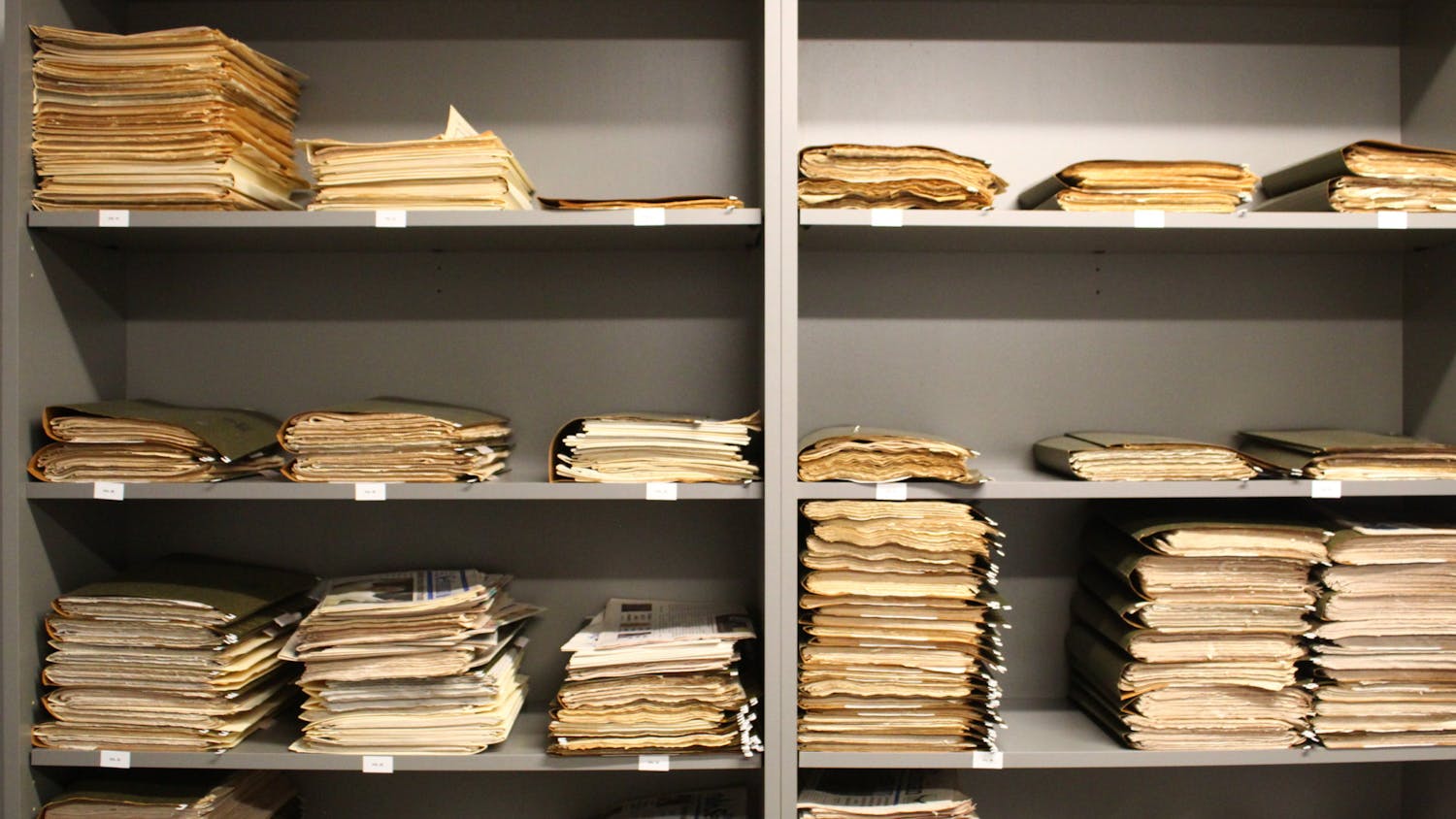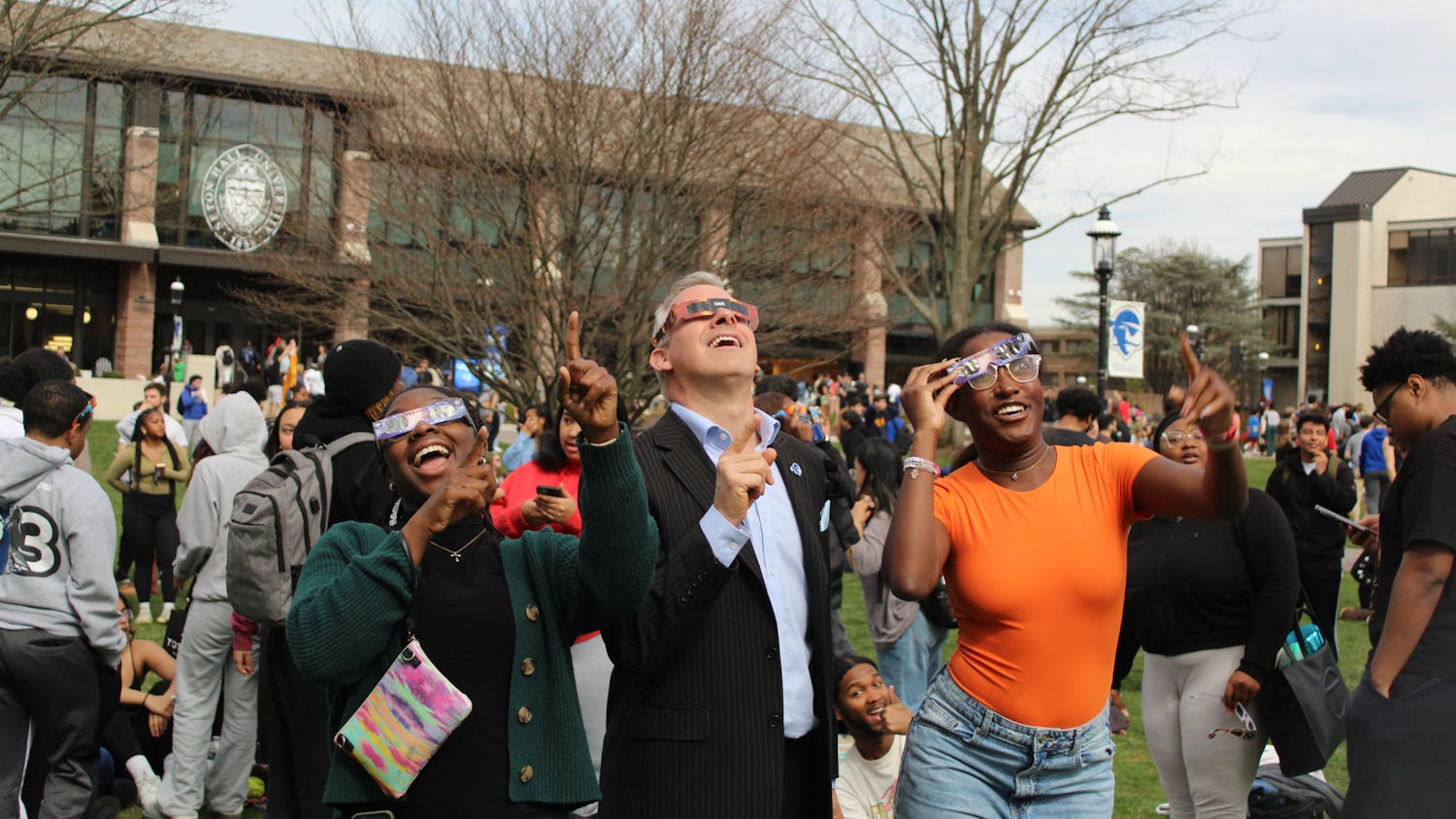[caption id="attachment_11082" align="alignnone" width="469"] Courtesy of Seton Hall's website[/caption]
As the warm, late September day progressed, Washington D.C. buzzed with excitement following the Holy Father’s morning visit to the White House, where he met President Barack Obama and the rest of the first family. Stickers of Pope Francis’ face with the hashtag #PopeInUs could be seen stuck on dozens of people on the streets.
Spectators lined the metal barricades outside the headquarters of the United States Conference of Catholic Bishops where Pope Francis prepared for the canonization Mass of Blessed Junípero Serra at the Basilica of the National Shrine of the Immaculate Conception, the largest Roman Catholic church in North America and one of the ten largest churches in the world.
Every movement at the door was automatically greeted with screams. First a security guard, then a group of sisters, then finally Pope Francis appeared, all in white with a huge smile on his face. He shook some hands and blessed the crowd as a wall of hands, laden with yellow and white Holy See flags and cell phones, continually stretched out towards him.
The crowd, this time at the Basilica, erupted in screams yet again when the Holy Father rolled up to the site in a Jeep Pope-mobile, flanked by security guards. With a constant hand in the air, Pope Francis was met with relentless adoration from an excited crowd constantly in motion. Both media and Francis fans darted along with the Pope-mobile, guarded from the skipping fans by security, barricades and a thick wall of people.
This was the first time Pope Francis celebrated mass publicly in the United States. It started in the hour before, when he addressed about 3,600 U.S. seminarians and novices seated in the upper church. Among them were approximately 80 of Seton Hall’s own seminarians, including Peter Gallagher, a senior.
An altar was constructed on the east portico of the Basilica, where mass was conducted outside. At 78 years old, Pope Francis needed some assistance on the outside steps and his speech matched his halting gait. A full orchestra and a choir of more than 100 singers, however, filled the outdoor space with Latin and Spanish hymns throughout the procession, between several different cardinals, bishop and other speakers who addressed the crowd during the mass.
More than 25,000 people gathered behind the barricades lining the road and the seating area, white-robed bishops in their violet zucchettos closer to the altar and seating for the general crowd behind, following by the standing area.
This was a scene set against the backdrop of a small, gated Catholic college campus, much like Seton Hall.
Mirrored in the guest speakers on stage, a slew of different languages could be heard in the crowd. Shouts of “Viva el Papa” could be heard at the conclusion of the mass. The native Argentinian spoke only Spanish throughout the mass, though not every mass on the tour will be the same.
He is the first Hispanic Pope, and this mass marks the canonization of the first Hispanic in the United States, Junipero Serra, a Franciscan monk who helped evangelize California in the 18th century, according to an ABC News article.
Pope Francis makes his visit in the midst of an evolving Catholic Church in America. There are 68 million registered Catholics in the United States. While one third of those are Hispanic, a mere 28 out of 270 active bishops in the U.S. are, according to a New York Times article.
Dr. Ines Murzaku, professor and founding chair of the Department of Catholic Studies with copious experience with the modern Catholic Church, explained the climate in which the Holy Father is visiting the United States. Some of the main concerns for Pope Francis, Murzaku said, are “family, migration, integration and care for an integral ecology of creation.”
She pointed to a correlation between immigration to the United States and the multitude of refugees pouring into Italy, where The Vatican is located, and other European nations.
“As a ‘shepherd,’ he needs to know his ‘sheep.’ It will really be beneficial for the pontiff to have a greater understanding of the people in our country, and for the people here to get a first-hand experience of the Holy Father,” she said. “Moreover, the canonization of Blessed Junipero Serra, a Spanish Franciscan missionary, would encourage integration within the U.S. Church of an increasingly relevant and very important Hispanic component.”
She predicted that over the span of his visit, “Pope Francis will speak words of both challenge and inspiration” and that he will “find the Church (in America), for all its difficulties, is the best example of the Church alive and in action.”
Emily Balan can be reached at emily.balan@student.shu.edu
Courtesy of Seton Hall's website[/caption]
As the warm, late September day progressed, Washington D.C. buzzed with excitement following the Holy Father’s morning visit to the White House, where he met President Barack Obama and the rest of the first family. Stickers of Pope Francis’ face with the hashtag #PopeInUs could be seen stuck on dozens of people on the streets.
Spectators lined the metal barricades outside the headquarters of the United States Conference of Catholic Bishops where Pope Francis prepared for the canonization Mass of Blessed Junípero Serra at the Basilica of the National Shrine of the Immaculate Conception, the largest Roman Catholic church in North America and one of the ten largest churches in the world.
Every movement at the door was automatically greeted with screams. First a security guard, then a group of sisters, then finally Pope Francis appeared, all in white with a huge smile on his face. He shook some hands and blessed the crowd as a wall of hands, laden with yellow and white Holy See flags and cell phones, continually stretched out towards him.
The crowd, this time at the Basilica, erupted in screams yet again when the Holy Father rolled up to the site in a Jeep Pope-mobile, flanked by security guards. With a constant hand in the air, Pope Francis was met with relentless adoration from an excited crowd constantly in motion. Both media and Francis fans darted along with the Pope-mobile, guarded from the skipping fans by security, barricades and a thick wall of people.
This was the first time Pope Francis celebrated mass publicly in the United States. It started in the hour before, when he addressed about 3,600 U.S. seminarians and novices seated in the upper church. Among them were approximately 80 of Seton Hall’s own seminarians, including Peter Gallagher, a senior.
An altar was constructed on the east portico of the Basilica, where mass was conducted outside. At 78 years old, Pope Francis needed some assistance on the outside steps and his speech matched his halting gait. A full orchestra and a choir of more than 100 singers, however, filled the outdoor space with Latin and Spanish hymns throughout the procession, between several different cardinals, bishop and other speakers who addressed the crowd during the mass.
More than 25,000 people gathered behind the barricades lining the road and the seating area, white-robed bishops in their violet zucchettos closer to the altar and seating for the general crowd behind, following by the standing area.
This was a scene set against the backdrop of a small, gated Catholic college campus, much like Seton Hall.
Mirrored in the guest speakers on stage, a slew of different languages could be heard in the crowd. Shouts of “Viva el Papa” could be heard at the conclusion of the mass. The native Argentinian spoke only Spanish throughout the mass, though not every mass on the tour will be the same.
He is the first Hispanic Pope, and this mass marks the canonization of the first Hispanic in the United States, Junipero Serra, a Franciscan monk who helped evangelize California in the 18th century, according to an ABC News article.
Pope Francis makes his visit in the midst of an evolving Catholic Church in America. There are 68 million registered Catholics in the United States. While one third of those are Hispanic, a mere 28 out of 270 active bishops in the U.S. are, according to a New York Times article.
Dr. Ines Murzaku, professor and founding chair of the Department of Catholic Studies with copious experience with the modern Catholic Church, explained the climate in which the Holy Father is visiting the United States. Some of the main concerns for Pope Francis, Murzaku said, are “family, migration, integration and care for an integral ecology of creation.”
She pointed to a correlation between immigration to the United States and the multitude of refugees pouring into Italy, where The Vatican is located, and other European nations.
“As a ‘shepherd,’ he needs to know his ‘sheep.’ It will really be beneficial for the pontiff to have a greater understanding of the people in our country, and for the people here to get a first-hand experience of the Holy Father,” she said. “Moreover, the canonization of Blessed Junipero Serra, a Spanish Franciscan missionary, would encourage integration within the U.S. Church of an increasingly relevant and very important Hispanic component.”
She predicted that over the span of his visit, “Pope Francis will speak words of both challenge and inspiration” and that he will “find the Church (in America), for all its difficulties, is the best example of the Church alive and in action.”
Emily Balan can be reached at emily.balan@student.shu.edu

Comments




